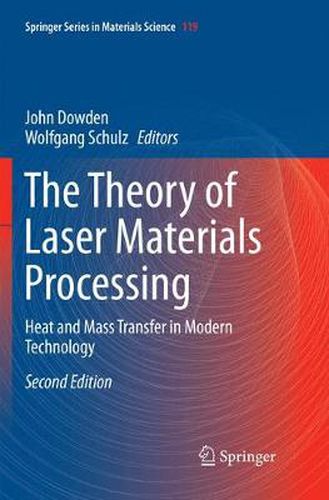Readings Newsletter
Become a Readings Member to make your shopping experience even easier.
Sign in or sign up for free!
You’re not far away from qualifying for FREE standard shipping within Australia
You’ve qualified for FREE standard shipping within Australia
The cart is loading…






This title is printed to order. This book may have been self-published. If so, we cannot guarantee the quality of the content. In the main most books will have gone through the editing process however some may not. We therefore suggest that you be aware of this before ordering this book. If in doubt check either the author or publisher’s details as we are unable to accept any returns unless they are faulty. Please contact us if you have any questions.
The revised edition of this important reference volume presents an expanded overview of the analytical and numerical approaches employed when exploring and developing modern laser materials processing techniques. The book shows how general principles can be used to obtain insight into laser processes, whether derived from fundamental physical theory or from direct observation of experimental results. The book gives readers an understanding of the strengths and limitations of simple numerical and analytical models that can then be used as the starting-point for more elaborate models of specific practical, theoretical or commercial value.
Following an introduction to the mathematical formulation of some relevant classes of physical ideas, the core of the book consists of chapters addressing key applications in detail: cutting, keyhole welding, drilling, arc and hybrid laser-arc welding, hardening, cladding and forming. The second edition includes a new a chapter on glass cutting with lasers, as employed in the display industry.
A further addition is a chapter on meta-modelling, whose purpose is to construct fast, simple and reliable models based on appropriate sources of information. It then makes it easy to explore data visually and is a convenient interactive tool for scientists to improve the quality of their models and for developers when designing their processes. As in the first edition, the book ends with an updated introduction to comprehensive numerical simulation.
Although the book focuses on laser interactions with materials, many of the principles and methods explored can be applied to thermal modelling in a variety of different fields and at different power levels. It is aimed principally however at academic and industrial researchers and developers in the field of laser technology.
$9.00 standard shipping within Australia
FREE standard shipping within Australia for orders over $100.00
Express & International shipping calculated at checkout
This title is printed to order. This book may have been self-published. If so, we cannot guarantee the quality of the content. In the main most books will have gone through the editing process however some may not. We therefore suggest that you be aware of this before ordering this book. If in doubt check either the author or publisher’s details as we are unable to accept any returns unless they are faulty. Please contact us if you have any questions.
The revised edition of this important reference volume presents an expanded overview of the analytical and numerical approaches employed when exploring and developing modern laser materials processing techniques. The book shows how general principles can be used to obtain insight into laser processes, whether derived from fundamental physical theory or from direct observation of experimental results. The book gives readers an understanding of the strengths and limitations of simple numerical and analytical models that can then be used as the starting-point for more elaborate models of specific practical, theoretical or commercial value.
Following an introduction to the mathematical formulation of some relevant classes of physical ideas, the core of the book consists of chapters addressing key applications in detail: cutting, keyhole welding, drilling, arc and hybrid laser-arc welding, hardening, cladding and forming. The second edition includes a new a chapter on glass cutting with lasers, as employed in the display industry.
A further addition is a chapter on meta-modelling, whose purpose is to construct fast, simple and reliable models based on appropriate sources of information. It then makes it easy to explore data visually and is a convenient interactive tool for scientists to improve the quality of their models and for developers when designing their processes. As in the first edition, the book ends with an updated introduction to comprehensive numerical simulation.
Although the book focuses on laser interactions with materials, many of the principles and methods explored can be applied to thermal modelling in a variety of different fields and at different power levels. It is aimed principally however at academic and industrial researchers and developers in the field of laser technology.